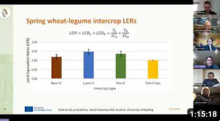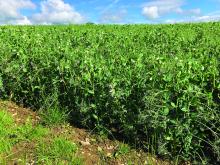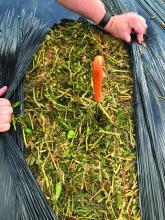1

This project aims to bring some clarity on the extent to which commonly used tools diverge in their estimates of carbon footprint for a range of well-defined reference systems.

Applying soil health principles at scale is a challenge, with many farmers looking to stop ploughing but still relying on chemical weed killers and those unwilling to use chemical weed killers still…

Intercropping is known to have environmental and economic benefits, but which varieties work best together in a UK climate?
Somerset beef and arable producer, Richard Coles, has substantially reduced his costs of production by cutting out expensive, bought-in ingredients and replacing them with home-grown feed, including…
Buying a standing crop of beans and producing 21% protein forage has helped sheep and beef producer, Steven Smith, improve profitability on his Northumberland farm.

In recent years we have seen an increase in the incidence of grain mite (Acarus siro) infestation in all stored cereals and pulses. Infestations can affect grain whether it is crimped, dry, or even…

Combining regenerative farming with a drive for home-grown cattle feed is increasing sustainability and profitability on a challenging, northern farm.

A Welsh farming family, who grew and crimped peas and beans as part of a government/EU trial, has been able to completely cut out bought-in feed from their cattle rations.

The search for a catch crop to fill the gap between lifting carrots in late spring and drilling winter wheat, led a Norfolk farmer to a 19% protein baled haylage from a quick-growing legume.

